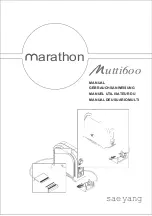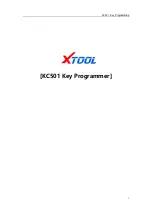
7
I
n
-h
ouSe
w
ater
d
IStrIbutIon
S
yStem
d
ISInfectIon
:
The following procedure is recommended for installations of the Vitapur
®
UV disinfection system in a
whole house treatment application. For systems installed on a municipally treated water system, plumbing
system disinfection is at the discretion of the user.
To disinfect the distribution system, carry out the following steps (please ensure that the UV system remains on
during the entire process):
• Familiarize yourself with the various shut-off valves on your system. It is important to understand which
combinations of valve positions allow you to isolate the Vitapur® UV disinfection system
• Shut the main water supply off
• Close the valves necessary to isolate the UV Prefilters. Remove the filter cartridge closest to the UV. Fill the
sump with 1-2 cups of household chlorine bleach (5.25%).
• Re-install the sump (without filter) and slowly re-pressurize the system. Open each faucet and allow cold
water to run until you can smell chlorine in the water. Shut off the faucet and repeat with all other household
faucets including hot water. Be sure to include all exterior faucets, shower heads, and dishwasher / washing
machine lines within this process.
• Allow the solution to remain in the lines for 30 minutes minimum.
• Re-install the pre-filter cartridge, and flush each individual water line as above until no chlorine odor is detected.
It is critical to ensure that the water distribution system is fully flushed of all residual chlorine prior to use.
EXTREME CAUTION SHOULD BE EXERCISED. As the level of chlorine in the system is approximately 25-50
times greater than that observed in municipally treated water (this is required for the disinfection of the
household lines). It is extremely important that proper flushing procedures be followed from all taps prior to use.
Note: The introduction of a chlorine disinfection solution to a hot water heater that has been used with
untreated hard water or water with excessive iron, manganese or other organic contaminants may lead
to oxidization of these materials. If you feel that these conditions may apply to your installation, a thorough
flushing of the hot water tank should be done to eliminate the oxidized material from entering the distribution
lines.
* Chlorine may cause OWL controller to enter alarm. If inlet solenoid valve is connected to OWLcontroller,
valve will close and stop water flow. To allow temporary water flow, press alarm disable button on OWL
controller to override alarm and open valve temporarily. OWL controller will reset when low UV alarm signal
is cleared.
1
2
3
4
• Slowly open the supply valves before and after the UV system and ensure there are no water leaks.
• For Class A And B Models: Connect the electronic ballast to the power outlet, and ensure that
both the ballast display (indicates lamp life remaining) and the green LED illuminate. The glow from
the UV lamp should also be visible through the VuCap (May not be visible in high ambiant lighting)
Your UV disinfection system is now ready for use.
• For Class A models: After powering up the lamp, plug UV sensor into OWL controller and connect
the OWL controller to power outlet. Refer to OWL manual for set up and programming instructions.
NOTE: In order to meet NSF-55 certification the flow restrictor that is included with the UV system must
be used to control the flow of water through the UV chamber. The flow restrictor should be
placed on the output. In most settings, the system should have a manual shut off valve at the
input. The water flows in the direction of the arrow located on the flow restrictor label.









































